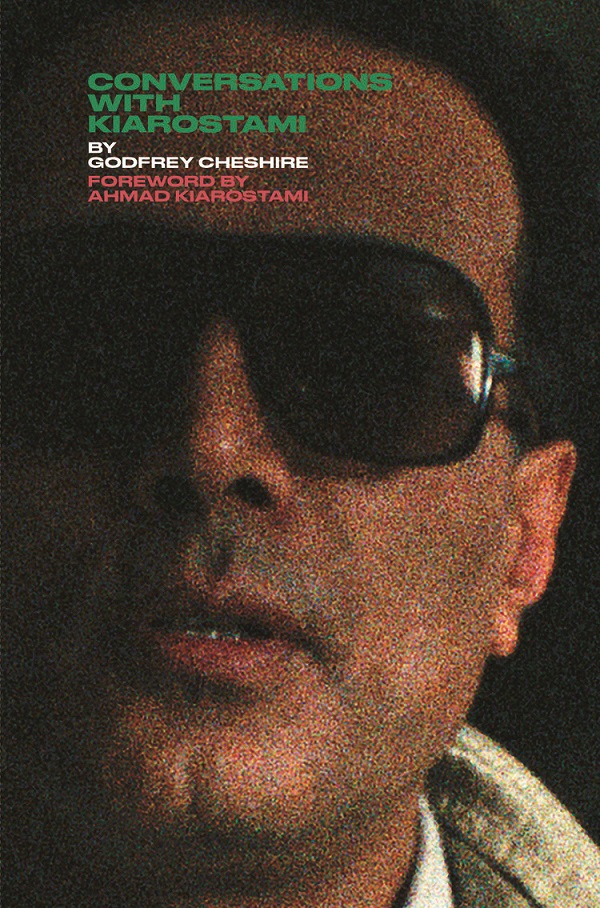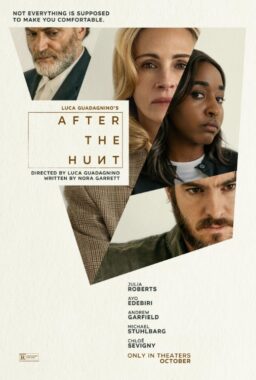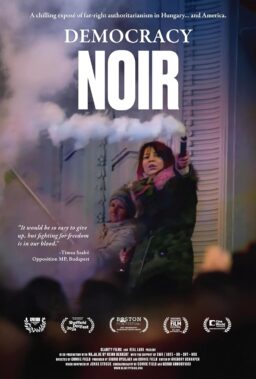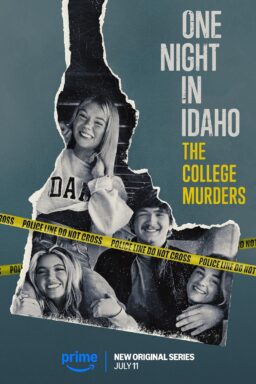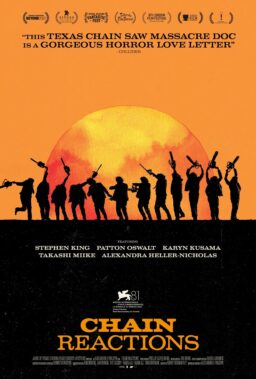“The effect of my personal life on my work is much more significant than anything else,” Abbas Kiarostami said to me during the interviews collected in my book Conversations with Kiarostami. At the time, we were discussing Where Is the Friend’s House? (1987), the first film that gained him international attention, which concerns a schoolboy’s attempts to return a friend’s notebook. Three years after that film, an earthquake devastated the area where it had been shot, around the Iranian village of Koker; Kiarostami made a trip to discover if the film’s child actors had survived, a journey he subsequently fictionalized in the road movie And Life Goes On (1992). Two years later, he fictionalized the making of that film in the meta-cinematic Through the Olive Trees (1994).
Critics dubbed the three films the Koker Trilogy. Although they have seldom been seen together, they will be featured—in brand-new restorations—in Abbas Kiarostami: A Retrospective, which begins a national tour at New York’s IFC Center this Friday. Then in August the Criterion Collection will release them as a box set (which contains an essay by me about the Trilogy).
Though in his early career Kiarostami, who had created a filmmaking division at Iran’s Center for the Intellectual Development of Children and Young Adults, made numerous films about kids, Where Is the Friend’s House? would be the last of his dramatic films centered on children. As we talked about that film, a prime example of the lyrical humanism that brought him global attention, he explained that a “revolution” in his household some years before had left him in a happier place, one that involved caring for his sons Ahmad and Bahman. I wanted to hear him expand on that idea.
Godfrey Cheshire: How did your own life affect the creation of Where Is the Friend’s House?
Abbas Kiarostami: The concept of this film comes from something very personal and also from another idea. Let me briefly tell the personal story, which is about Bahman [his younger son] when he was in second grade. A woman who was a friend of ours came to visit. She’d always been kind to Bahman since he was little. Whenever she came, Bahman would sit in her lap while we talked. But on this visit she’d just lost her job and was very nervous. Bahman was standing there watching us. He was very small, around six. He kept looking at us, wondering why he wasn’t on her lap. At one point she asked me if I had a cigarette and I said no. But then Bahman interrupted, saying that we did have cigarettes. I knew Bahman was lying, because we didn’t have any in the house. But Bahman said we had some in the refrigerator and went to look. He returned saying we didn’t have any, and then went to search the rest of the house, faking it. I knew he just wanted to communicate with her, and this provided him with the excuse to do so. So, when there weren’t any, he said: “If you want, I’ll go and buy them for you.” Then, my other son Ahmad said: “I’ll go.” He was older but, as I knew Bahman really wanted to do this, I told Bahman to go buy them. So he went. I told Ahmad to run and make sure that Bahman had something on, since it was winter, but Bahman was already gone. After much time, Bahman hadn’t returned. We got worried and went out to look for him. Then we realized that it was Friday night [the Muslim holy day], so it was dark and everything was closed. We searched for an hour and a half but couldn’t find Bahman. Suddenly, we saw him appear in the darkness with a pack of cigarettes in his hand. We asked him how he’d managed to buy the cigarettes, since everywhere was closed. He said that he’d gone to Ekhtiyarieh, which was surprising since it was four kilometers away. Ekhtiyarieh was close to Bahman’s grandmother’s house and he knew there would be stores open, since it was a very crowded and popular area. He was wearing only a shirt. I hugged him because his sense of responsibility was extraordinary to me; he knew that he couldn’t come back without the cigarettes. Seeing this in Bahman was very emotional for me, something that stayed with me for a long time.
I also heard another similar story that a schoolteacher told me, and I combined this with Bahman’s story to come up with the idea for Where Is the Friend’s House? The long trip didn’t exist in that story: the teacher had only seen that one boy’s homework had been written by another boy. Bahman’s sense of responsibility was combined with this other story and became my film.
This story could’ve been set in Tehran but you chose a more remote location in and around the village of Koker. Why is that?
Since I was making a poetic, heroic work, I thought it would be better to have rich, green spaces. The city lacked this aspect. I was also looking for a place where the children didn’t have heavy accents. Unfortunately, in our country there are jokes for all the different regions, so I was looking for a place that didn’t have a Tehrani accent and didn’t belong to a specific province. I kept looking around with the help of another director, Kambiz Partovi, who made The Fish and who comes from that region. We went there and, as the people spoke in the urban fashion with just a hint of an accent, I chose it.
Are all the actors in the film from that area?
Yes, everybody. I found the main child in a crowd at a place called Imamzadeh Hashem. There were one or two hundred men who were struggling to transport a large dome from a truck to place it over a shrine. It was as big as a house. This kid was among other children. I saw in his eyes that he was worried about the fate of this dome—that when they put it down it might fall, break, or be damaged. While the other kids were just playing, he was looking at the scene, from far away, with worried eyes. It was all in his eyes. This was the first thing that attracted my attention. He was useful to me, because for the whole length of the film I needed those worried and troubled eyes—the theme of the film is worry and anxiety. I don’t know who said it, but to find a good actor, you just have to look at their eyes—you can see the soul just by looking into the eyes. Not only did he have these eyes, he was also a truly responsible boy. And very sensitive.
So choosing this boy wasn’t difficult as we found him right away. The main issue was getting his parents’ approval, because his mother was against it. I paid the family well, promised to hire a private tutor, bought them gifts; but none of these things could gain her approval. There was a very interesting reason for this, which we discovered suddenly. When we went to pick up the child, the mother cried and moaned, saying: “You cannot take my child into the film.” Then we found out that she’d seen only one film in her life, many years earlier. It was an Indian movie in which a kid gets lost, and only returns when the mother is old and blind. She thought that if her son acted in the film he would get lost and would come back only when she’d become old and blind. She didn’t think that he would come home every night, but thought he was going inside the story. Her mind was fixated on this: the film, the disappearance of the child, the blindness of the mother.
Did you think of using this story in Where Is the Friend’s House?
Yes usually I would, but this story is too incredible. It’s unimaginable. You have to know that I’m smart enough to avoid going after stories that are too incredible. I’ve enough intelligence.
You used two brothers, Babak and Ahmad Ahmadpour, to play the main boys, who aren’t brothers in the story.
Yes. Since there was no resemblance between the two, I could use both of them. We made a deal with the whole family. We also hired the father as part of the crew, as the assistant to the cook. My assistant, Kiamars Poorahmad, wrote a book about the making of this film. If you want to know what the book says in one sentence, I’d say that the making of the film in itself is a totally separate story, a whole other adventure.
This boy, Babak Ahmadpour, really believed that he’d taken another child’s notebook by mistake. This is the truth. If the film touches your heart, it’s because every moment with that child is real. He never “acts.”
So you try to make children believe the fiction of the film is true?
Look, you have no choice; you have to create the right conditions if you want to work with children. You can’t just ask a kid to cry and expect him to cry. There’s no other way. You have to give him the dialogue, but he has to find the emotion.
One of the reasons why I don’t want to make films with children anymore is that I don’t want to continue this game. When an adult actor wakes up in the morning, he is under a lot of pressure but, since the adult understands money and fame, he tolerates the pressure. But children don’t understand this. Children don’t look for fame, therefore they truly get oppressed. But not adults. They sign a contract, but this isn’t the case with children.
Godfrey Cheshire will give a talk on “Kiarostami and Koker” after the 7:10pm screening of Through the Olive Trees on Saturday, July 27, at the IFC Center in New York. Get your copy of Conversations with Kiarastami here.

